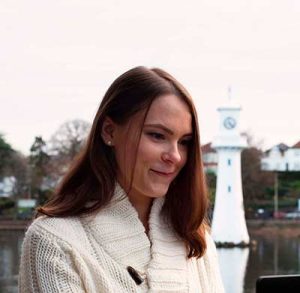
It’s that time of year once again. The Golden Quarter is nearly upon us, and the end of 2025 is on its way. And you know what that means. It’s already time to start thinking about 2026!
Gartner projects that retail IT spending will reach $240.7 billion by 2026, driven mainly by margin pressures and the need for operational efficiency. This is already reshaping how physical stores operate and compete, with some technology moving from a “nice-to-have” to a “must-have” for those that want to stay relevant.
So, in the interest of keeping you ahead of the game, let’s take a look at the in‑store retail industry trends that are shaping the future of retail tech.
Retail media for the win
With the perfect combination of ideal locations and mountains of consumer data, it’s no surprise that interest and use of retail media networks will continue to expand. Overall, it’s a win-win situation. Brands have the perfect platform to reach their desired customers, and retailers gain the cash they need to invest in other areas of the business. And with the impact of tariffs in the U.S. and regulatory changes in the UK on the horizon, every penny helps.
This trend, however, represents a fundamental shift in what customers mean to retail businesses. They’re no longer just buyers, but audiences who can be monetized. The trick to getting the most out of retail media networks will be less about the type of tech used and more about precision targeting equal to what we see online and ensuring these advertising opportunities enhance, not compromise, the customer experience. Failing to find a balance risks turning off customers and losing the very people who are the very reason for any retailer’s commercial and advertising success.
Practical augmented reality
For years now, we’ve been promised that unique in‑store experiences, including virtual and augmented reality, would define the role of brick-and-mortar stores. But since physical stores are still the largest sales channel, I predict that we will continue to see these technologies rolled out, but in more practical scenarios.
What do I mean by that? First, let’s take VR. A large proportion of the population can’t practically use VR for extended periods of time without experiencing discomfort or nausea. As a result, I doubt it will ever move beyond flagships and concept stores.
While augmented reality (AR), on the other hand, will continue to expand where it makes sense and meets store efficiency needs. In our recent fireside chat with Ian Scott, he gave a great example of this. Speaking to a store manager, he learned that a smart mirror in an outlet store offers more benefits to customers and staff than in a flagship store. Because in a flagship, the staffing levels are higher to support the customer experience, whereas in the outlet staffing levels are lower, and they need every support they can get to serve customers. This is just one example of a simple truth: 2026 will be the year that retailers wake up to the reality that technology for technology’s sake isn’t the way forward. But technology that’s perfectly placed to better serve the customer and align experiences across channels — that’s a total game‑changer.
Edge computing and truly connected stores
With the expansion of digital screens, AR, security cameras and smart devices, stores need to be able to process data faster than ever before. Which is why, in 2026, edge computing will play a central role. Instead of relying on outdated on-prem systems or entirely on the cloud, edge computing’s ability to process data closer to its source speeds up data processing and, by extension, decisions made in store.
This means that systems like computer vision can produce insights faster, alerting staff to customers in need through integrations with in-store communication solutions in real time. It also expands the number of devices and sensors a store can use and connect, creating a solid foundation for truly connected stores that use automation to enhance customer service and operational efficiency.
But automation doesn’t necessarily mean a cold, heartless store. With edge computing, the last, and most important, part of the store can finally be connected — the associates. Leveraging real‑time communications, integrations, the Internet of Things (IoT) and AI assistants through wearable devices, store associates will be able to instantly know what’s happening in store and respond to customer needs faster.
AI and machine learning dominance
Which brings us to AI. Beyond the hype driven by generative and agentic AI, the use of all forms of artificial intelligence, including machine learning, will continue to expand where there is proven ROI. But in physical stores in particular, 2026 will shine a spotlight on prescriptive analytics and agentic AI.
Why prescriptive analytics? Retailers already using AI-powered analytics have seen a 10% increase in profit margins, but that’s mainly through predictive analytics. And we’re moving beyond predicting what will happen to automatically implementing a response with the help of agentic AI workflows.
With prescriptive analytics, we’ll start to see stores where inventory restocking, price adjustments and staff coordination happen automatically based on real-time conditions. This includes AI that automatically creates tasks and notifies employees to move stock from a broken chiller or even adapt store layouts and product placement based on customer behavior patterns. Agentic AI and prescriptive analytics will be the important link between the data produced by connected store devices and action taken by associates on the sales floor.
Voice-first interfaces
In 2026, say goodbye to screens and keyboards and hello to voice. Thanks to advances in conversational AI and widespread familiarity with voice assistants like Siri, Alexa and Google, we’ll see an increase in both voice-activated online shopping and in-store employee support.
Generally, I expect that customer-facing voice assistants will remain limited in stores and will instead become more prevalent in website, phone and app‑based interactions. But behind the scenes, employee-focused voice solutions will transform the in‑store experience.
How? Well, remember the agentic AI assistants we covered earlier? It’ll be through voice, not text on a screen, that they’ll interact with associates, delivering product information, availability checks and advice directly through headsets or wearable devices. Backed by powerful retail communication platforms, this setup will give employees the information they need, when they need it, without ever having to leave a customer’s side or stare intently at screens. That way, customers will still experience quality service with a human touch, while staff will have an AI ace up their sleeve.
Ethical AI, data collection and cybersecurity: Protecting customer trust
As more and more data is collected and AI technologies are deployed, mitigating the risk of cyber attacks and data violations will move up the business priorities list. In fact, the high-profile cyber attacks on M&S, Co‑op, Harrods and United Natural Foods have highlighted that the threat is already here. And failing to prepare risks dealing with lost sales, ransoms, fees, lawsuits — and the most concerning — the loss of customer trust.
The first thing retailers need to consider is how to balance the benefits of data collection and analysis with customer privacy expectations and regulatory compliance. Some useful things to explore are advanced privacy-preserving technologies, such as federated learning, differential privacy and secure multi-party computation, which are designed to pull insights without exposing individual customer information.
But savvy retailers will take it one step further. They’ll also closely assess potential technology partners to ensure they are not only data compliant but also built with security in mind. Because as store technologies become more interconnected, retail businesses will need to ensure that they minimize exposure to backdoor threats while building more efficient and data‑driven stores.
Finally, it won’t just be about taking action; retailers will need to communicate transparently with customers about the actions they’re taking and how they’re using data and AI. Otherwise, consumers will make their own assumptions, based on truth or conjecture, and all the hard-won tech benefits will be lost. Because if you lose customer trust, none of the rest matters.
Conclusion: Turning trends into action
Overall, these trends represent a fundamental shift toward autonomous, intelligent retail operations where technology and human expertise work together to create superior customer experiences while improving operational efficiency and — importantly — profitability.
But if you’re already exploring how to adopt the top retail trends in 2026, don’t fall for the hype. Instead, please approach any implementation strategically. Not every solution will fit every business model or brand. The first key to success is to focus on technologies that align with your operational needs, customer promise and existing infrastructure.
While the second is to optimize change management by:
- Adopting technology in phases to minimize disruption
- Prioritizing staff training and adoption
- Measuring ROI and tracking performance continuously
- Building a strong communication infrastructure as the foundation
- Planning strategically to create a competitive advantage
The retail industry trends of 2026 outlined here point to a future where efficiency, intelligence and human-centered design define success. The retailers who will benefit the most will be the ones that invest thoughtfully, act decisively and keep customers and employees at the heart of their strategies.
And I hope that will be you.
Interested in exploring how you can connect your employees to the store of the future? Speak to our team to discover how x‑hoppers is putting store associates at the center of store communications, transforming the in‑store experience.



